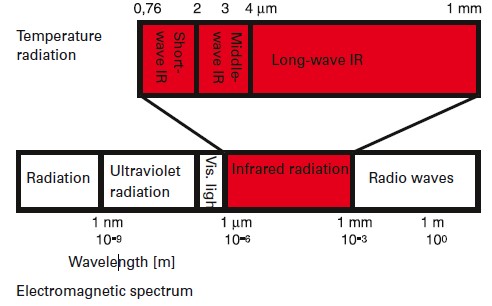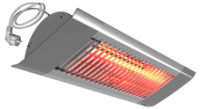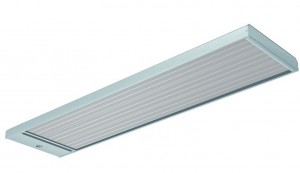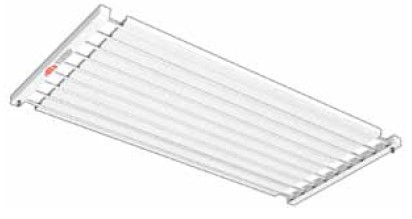 Add My Company
Add My Company
The Problem With Radiant Heater Intensity
You might anticipate that one 2 kw radiant heater would be very much the same as another. Actually the delivery of the radiant heat, i.e. the radiant heater intensity, can be very different from on type of radiant heater to another. One of the problems that can occasionally arise from buying a radiant heater is of dashed expectations on heat delivery.
If people are used to perhaps an infrared mobile radiant heater of say 2kw, then when they purchase a 2 kw ceiling mounted radiant heater, and use it for the 1st time they may believe that it is not working properly. This is because the heat energy is delivered at a lower intensity from a larger area of heater. 2 kw of heat is still 2 kw of heat but the characteristic of how that heat is delivered will be very different from what they might be used to.
Radiant Heaters, Infrared and the Electromagnetic Spectrum
To understand this in little bit more detail, it is important to understand that radiant heat is transmitted in wave form and that the wavelengths that convey radiant heat all fall into the infrared part of the electromagnetic spectrum. This means that the various types of radiant heater, including quartz, ceramic, carbon, halogen and gas-fired are all types of infrared heater by definition. It is perhaps confusing because people often associate infrared heaters with red coloured light that some infrared heaters emit.
Infrared is quite a broad section of the electromagnetic spectrum and the complete range of wavelengths stretches from the 10-6m to 10-3m.

In very general terms, heaters that emit visible light are ether emitting shortwave IR (sometimes known as near infrared or NIR) or medium wave IR. These type of heaters are characterised as having very hot elements, up to about 2000°C and have therefore high power density, which is another way of saying you get a lot of heat energy from a relatively small area of element.
Radiant heaters with low element temperatures tend be emitters of 'far infrared' otherwise known as long wave infrared. There are various types of heater element for heaters operating in this range including low watt density ceramic and aluminum based alloys where the operating surface temperature of the element can be as low as 300°C. The purpose of these types of radiant heaters is not to generate hot spots of localised felt heat, but to transmit heat energy to nearby surfaces over time so that those surfaces in will themselves become warmer.
Radiant Heater Intensity and Comfort
One of the great misconceptions with radiant heaters is that people will expect to 'feel' the heat from a long wave radiant heater, in the same way that they feel the heat from a log fire. But because they deliver low intensity heat, the effect is not that you feel warm close to it, but the chill gently disappears from the area being heated.
For this reason, you tend to get a split in the radiant heater market :-
NIR and medium wave IR tends to be used in radiant heaters that are mobile or designed for heating small areas to give localised heating


Long wave IR tends to get used for applications that require a uniform heat over a wider area and where the an array of heaters can be used to provide an even radiant heater intensity over that heated area.
It gets more confusing still because there are radiant heaters that have even lower surface temperatures. Even some of the ceiling mounted electric radiant heater can have very low radiant heater intensity with surface temperature of 150°C or even 100°C. Going onto water fed models the radiant heater intensity is yet lower and depending on the system flow and return water temperature the surface of radiant LPHW water fed panels can be as low as 60°C.

Conclusion on Radiant Heater Intensity
So where does all this leave the now confused buyer of a radiant heater?
If there is a simply rule of thumb to come out of all this, it is that the lower the intensity the radiant heat, the greater its suitability to 'comfort' applications. conversely the greater the intensity of the radiant heat, the less suitable it is for comfort applications, and perhaps the more applicable it is for spot heating eg. in smoking shelters, workshops and the like.
Basically the direction to follow is determined by the application and the desired outcome.
- If you are heating a work shop or your patio, where your expectation is to potentially be a bit chilly by virtue of where it is and what it is but you want some warmth so that you can use it, then the solution will be the NIR and medium wave IR heaters.
- If you desire that the room or building to be heated should have a comfortable and even temperature, because it might be a working environment such as an office or production facility, then the best solution will come from models with lower radiant heater intensity.
For more information on The Effect Of Radiant Heater Intensity On Heater Choice talk to Puravent

